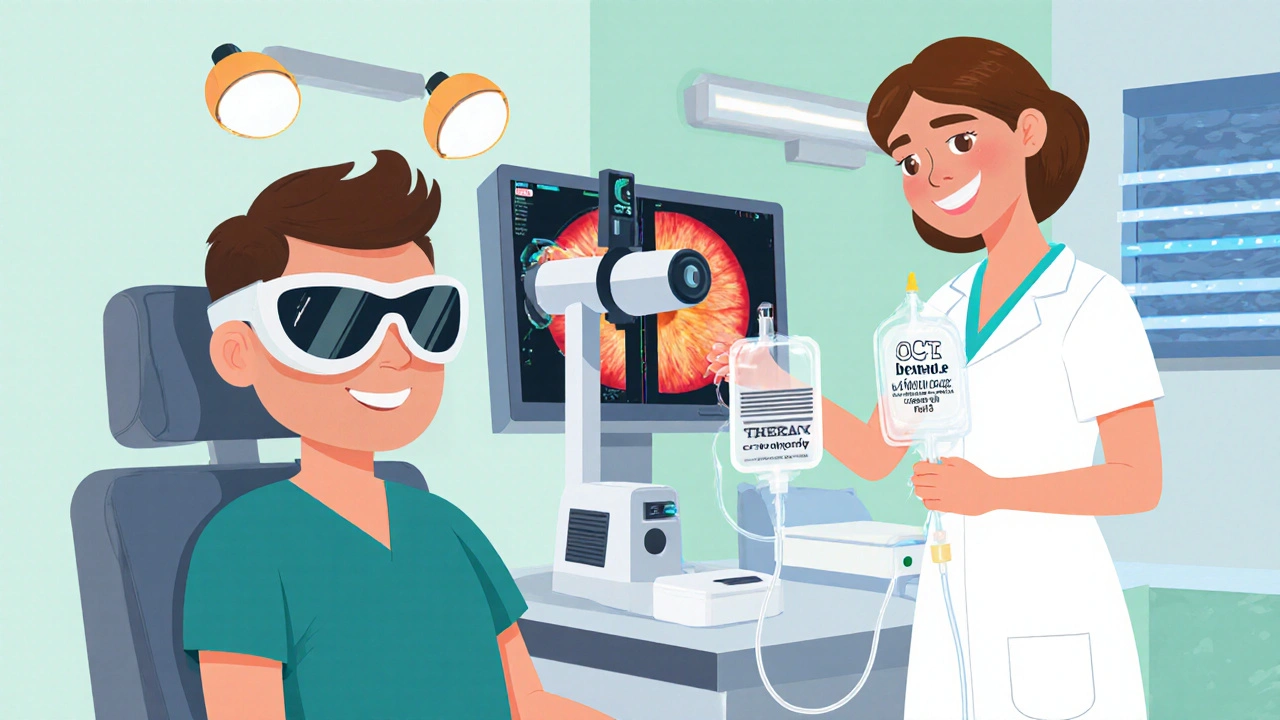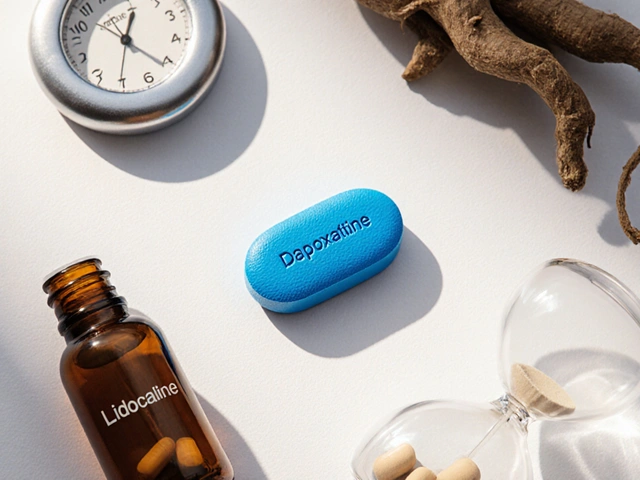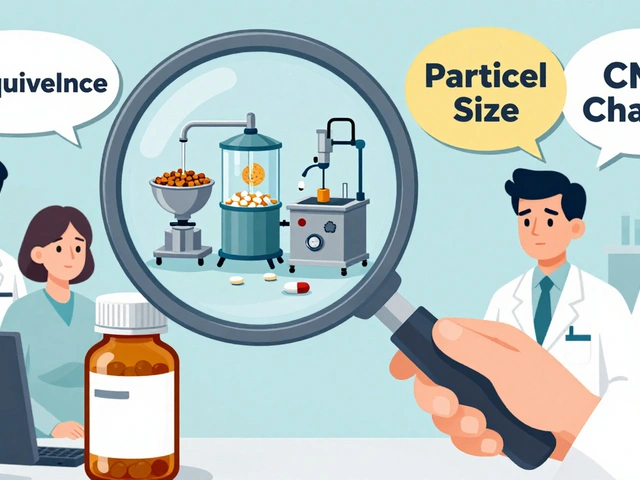Porphyria Light Exposure Risk Calculator
Key Takeaways
- Porphyria can trigger a range of eye problems, from mild light sensitivity to severe retinal damage.
- Acute attacks, especially in Acute Intermittent Porphyria, often bring visual disturbances that need prompt medical attention.
- Protecting your eyes means controlling light exposure, staying hydrated, and collaborating with a specialist familiar with porphyria.
- Nutrition, medication review, and regular eye exams are core parts of a long‑term vision‑preserving plan.
- Understanding the type of porphyria you have helps you anticipate specific ocular risks.
When it comes to rare metabolic disorders, Porphyria is a group of inherited or acquired conditions that disrupt the production of heme, the pigment that carries oxygen in blood. While skin rashes and abdominal pain often steal the spotlight, eye health is a silent but serious side effect. If you’ve ever felt a sudden sting of light or noticed blurry spots after a porphyria flare, you’re not alone. This guide walks you through why porphyria affects vision, how to spot warning signs early, and practical steps to keep your sight sharp.
Why Porphyria Messes With Your Eyes
Heme isn’t just a blood‑carrier; it’s a building block for enzymes that protect cells from oxidative stress. When the heme pathway stalls, a handful of toxic intermediates-most notably porphobilinogen (PBG) and aminolevulinic acid (ALA)-build up in the bloodstream. These compounds love to cling to light‑sensitive tissues, and the retina is the most vulnerable part of the eye. Acute Intermittent Porphyria is the classic culprit for sudden visual disturbances. During an attack, high levels of ALA irritate the optic nerve, leading to temporary vision loss or colour‑vision changes. On the other hand, Erythropoietic Protoporphyria and Cutaneous Porphyria generate a different set of phototoxic reactions that cause chronic light‑sensitivity and, over years, may scar the cornea.
Think of it like a sunburn on a microscopic scale: the chemicals act as internal sun‑filters that over‑heat delicate eye structures. The result? Phototoxic reaction, retinal oedema, and in extreme cases, permanent vision loss.
Common Ocular Symptoms Across Porphyria Types
- Photophobia - Unbearable discomfort in bright light, often described as “eyes burning.”
- Blurred vision - Especially after prolonged exposure to sunlight or fluorescent lighting.
- Colour‑vision defects - Trouble distinguishing reds and greens, a hallmark of acute attacks.
- Scotomas - Small blind spots that appear suddenly and can disappear after the attack subsides.
- Eye‑pain - Deep, aching pain behind the eye that may mimic sinus issues.
These symptoms can masquerade as migraines, sinus infections, or simple eye strain, which is why a thorough medical history is crucial.

How to Diagnose Porphyria‑Related Vision Problems
First, a blood test that checks for elevated PBG and ALA confirms a porphyria flare. For ocular involvement, eye‑care professionals add a few specialized exams:
- Fundus photography - Captures the back of the eye to spot retinal swelling.
- Optical coherence tomography (OCT) - Provides cross‑sectional images of the retina, revealing subtle oedema.
- Electroretinography (ERG) - Measures retinal response to light; abnormal waves indicate phototoxic damage.
- Visual field testing - Detects scotomas that patients might not notice.
Because porphyria attacks can be fleeting, the timing of these tests matters. Ideally, they’re done during an acute episode and repeated once symptoms settle, offering a clear picture of what’s reversible and what’s permanent.
Immediate Steps When You Notice Vision Changes
Act fast. The longer the eye stays exposed to toxic intermediates, the higher the risk of lasting damage.
- Seek emergency care if you experience sudden vision loss or severe eye pain.
- Stay out of bright light - Dim lights at home, wear tinted or UV‑blocking sunglasses immediately.
- Hydrate - Dehydration worsens porphyria attacks; sip water and electrolyte solutions.
- Ask your doctor about IV heme therapy - Rapid infusion can halt the buildup of harmful compounds.
- Notify your ophthalmologist that you have porphyria; they can tailor the exam to your needs.
Long‑Term Strategies to Safeguard Your Sight
Prevention beats cure every time. Below is a practical checklist that fits into daily life without turning it into a chore.
- Light management
- Wear wrap‑around sunglasses with at least 400nm UV protection whenever you step outside.
- Install amber‑tinted indoor lighting; it reduces phototoxic activation while still being functional.
- Avoid fluorescent tubes that emit high‑energy blue light; opt for LED bulbs labeled “low‑blue‑light.”
- Nutrition & supplements
- Maintain a balanced diet rich in iron, B‑complex vitamins, and antioxidants (vitaminC, lutein).
- Consider a low‑carbohydrate regimen during flare‑prone periods; spikes in glucose can trigger attacks in some types.
- Discuss with your physician the safety of beta‑carotene supplements, which may help protect retinal cells.
- Medication review
- Many common drugs (e.g., barbiturates, some antibiotics, hormonal contraceptives) can precipitate attacks. Keep an updated list and share it with any new prescriber.
- Ask about safer alternatives; sometimes a simple switch to a non‑porphyrogenic pain reliever makes a big difference.
- Regular ophthalmic monitoring
- Schedule an eye exam at least twice a year, even when you’re feeling fine.
- Ask for OCT and visual field testing as part of the routine; early detection of subtle changes can prevent irreversible loss.
- Stress and sleep hygiene
- Stress hormones can trigger acute episodes. Practice relaxation techniques-deep breathing, gentle yoga, or meditation.
- Aim for 7-9 hours of sleep; sleep deprivation is a known trigger for several porphyria subtypes.
Following these steps won’t eliminate the risk, but it dramatically lowers the chance that a routine flare spirals into a vision‑threatening emergency.

Comparing Ocular Risks by Porphyria Subtype
| Porphyria Type | Typical Eye Symptom | Onset | Long‑Term Risk |
|---|---|---|---|
| Acute Intermittent Porphyria | Transient visual loss, colour‑vision defects | During acute attacks | Low if attacks are promptly treated |
| Erythropoietic Protoporphyria | Severe photophobia, corneal scarring | Early childhood, worsens with sun exposure | Moderate - chronic scarring possible |
| Cutaneous Porphyria (e.g., Porphyria Cutanea Tarda) | Blistering around eyes, hyperpigmentation | After repeated sun exposure | High - risk of permanent skin changes around eyelids |
When to Involve a Porphyria Specialist
Not every eye doctor is familiar with the metabolic quirks of porphyria. You should seek a specialist when:
- Standard treatments (eye drops, lubricants) don’t ease photophobia.
- You’ve had more than two acute attacks in the past year.
- Genetic testing reveals a rare subtype (e.g., Heme biosynthesis mutation).
Specialists often work closely with hematologists and dermatologists to create a unified care plan that addresses both systemic and ocular aspects.
Frequently Asked Questions
Can porphyria cause permanent blindness?
Permanent blindness is rare, but it can happen if acute attacks repeatedly expose the retina to high levels of ALA without prompt treatment. Early intervention and strict light protection dramatically reduce this risk.
Are sunglasses enough to prevent eye problems?
Standard sunglasses help, but you need wrap‑around lenses that block UV and blue light down to 400nm. Photo‑protective glasses with a matte tint are best for daily wear.
Do any foods trigger eye issues in porphyria?
High‑protein meals rich in ALA precursors (like certain legumes) can exacerbate attacks in some people. Pairing protein with complex carbs and staying hydrated usually keeps the metabolic pathway stable.
Is there a cure for porphyria‑related eye damage?
No definitive cure yet, but therapies such as IV heme, liver transplantation for severe cases, and aggressive photoprotection can halt progression and even restore some lost function.
How often should I have an eye exam?
At least twice a year, or sooner if you notice new symptoms during a flare. Your ophthalmologist may schedule additional OCT scans if you have a high‑risk subtype.
Keeping your vision clear while living with porphyria isn’t a mystery-it’s a set of habits, timely medical care, and a good dose of awareness. By understanding the link between heme metabolism and eye health, you empower yourself to act before a flare turns into a permanent sight issue. Remember, the best defense starts with protecting the eyes now, not later.











Carissa Padilha
They don’t want you to realize that the “official” guidance on porphyria eye care is a smokescreen. Every time a new supplement is touted, a hidden lab gets a cut, and the real safety data gets buried under glossy brochures. The fact that the retina is a silent victim fits perfectly into a narrative where the pharma industry profits from chronic fear. Light‑blocking glasses? Sure, but have they ever disclosed the exact wavelengths that trigger the toxic intermediates? You’ll find the same pattern in the way governments downplay rare metabolic disorders – they’re “too rare” to bother with proper research, which conveniently keeps the funding wheels turning. Keep your eyes open, literally and figuratively, because the truth is rarely as bright as the sun they tell you to avoid.
Richard O'Callaghan
i think you’re overthinking it, but defnitely there’s some truth – the docs do sometimes hide info. i’ve seen thier pamphlets and they’re full of vague warnings that barely cover the real risks. maybe it’s just for safety, but i’m not sure you can trust every source, ya know?
Alexis Howard
I guess the article is just another hype piece
Katie Henry
It is commendable that you are taking proactive steps to safeguard your vision amidst the challenges presented by porphyria. By adhering to the recommended light‑management strategies, maintaining optimal hydration, and pursuing regular ophthalmic evaluations, you create a robust defense against potential ocular complications. Your commitment exemplifies the diligent stewardship of personal health, and it serves as an inspiring model for others navigating similar complexities.
Chris Beck
What these so‑called “experts” fail to mention is how the government has been turning a blind eye to the real threats. They push cheap sunglasses while ignoring the fact that our own health agencies hide data to keep the industry afloat. It’s a disgrace that we have to fight for basic protection when the system is designed to profit from our suffering.
Sara Werb
Honestly, this is exactly why I’m fed up!!! The whole narrative feels like a conspiracy fed by corporate greed & the media!!! They’re selling us “solutions” while keeping the truth locked away!!! It’s infuriating that we’re made to believe we’re safe when the evidence is right in front of us!!!
Winston Bar
Honestly, I could scroll past this and not care, but why not point out that most of these recommendations are just common sense? Wear sunglasses, stay hydrated, see a doctor – that’s it. The article makes it sound like a breakthrough when it’s really basic health advice dressed up in fancy terms.
Russell Abelido
I hear where you’re coming from, and it can feel overwhelming when every new recommendation feels like another hurdle. 😌 Remember, each small step you take – a sip of water, a quick check‑in with your doctor – builds a stronger shield for your eyes. You’re not alone in navigating this, and your persistence truly matters.
Steve Holmes
Hey team, great points all around! I’d love to add that tracking your daily light exposure with a simple app can give you real‑time insights – you can see exactly when you’re hitting risky levels and adjust accordingly! Also, don’t forget to ask your ophthalmologist about blue‑light filter lenses; they’ve made huge strides in recent years!!!
Tom Green
Thanks for the suggestion! Incorporating a light‑tracking app is a practical way to personalize protection, and discussing filter options with your eye doctor ensures you get the most up‑to‑date technology. Keep sharing these tips; the community thrives on collective knowledge.
Emily Rankin
Living with porphyria can feel like walking a tightrope suspended over a stormy sea, where every flash of light threatens to plunge you into darkness. Yet, within that precarious balance lies an opportunity to rewrite the narrative of vulnerability into one of resilient stewardship. Each morning you choose a pair of UV‑blocking lenses, you are not merely shielding your eyes; you are affirming a commitment to your own future sight. The biochemical dance of heme synthesis, though fraught with peril, also reminds us of the profound interconnectedness of our bodies and the environment. When an acute attack looms, the surge of ALA and PBG becomes a call to action, urging you to hydrate, to seek prompt medical care, and to cherish the moments of clarity you still possess. This vigilance, though demanding, cultivates a mindfulness that many never experience in the complacency of health. Over time, the rituals of light management, nutrition, and regular ophthalmic check‑ups become not burdens but blessings, each a thread weaving a tapestry of protection. The science behind OCT and ERG scans, while technical, offers a window into the subtle symphonies of retinal health, allowing early interventions that can preserve vision. Remember, the retina is remarkable; it possesses a capacity for repair that, when nurtured, can rebound from temporary insults. Your proactive stance can tip the scales from temporary scotomas to lasting clarity. Embrace the support of specialists who understand the metabolic nuances, for they are allies in this journey. Celebrate the small victories-a day without photophobia, a comfortable evening under dimmed lights-as milestones of progress. Let optimism be the beacon that guides you through the inevitable fluctuations of disease, for hope fuels adherence to protective habits. In sharing your experience, you illuminate a path for others navigating similar shadows, turning personal struggle into communal strength. Ultimately, protecting your vision is more than a medical regimen; it is an act of honoring the gift of sight, a promise to yourself to witness the world’s wonders for as long as possible.